Some Thoughts About Kona Bicycles
Editor's Note: If you've ever loved a Kona bike, please share your memories, and we'll publish a compilation of reader, and other editor anecdotes. This (hopefully) isn't a goodby to the brand, but it is a great excuse to reminisce.
Every great Kona Bicycles story seems to include Dik Cox. Sales rep. Avid rider of all types of bikes. Spirit animal? Either way, a member of Kona’s old guard, driving Kona to be a company creating long-term relationships with their independent dealers, staff, and customers rather than just another brand hawking bikes through whatever channel they think will margin-them-up the most.
As a global sales rep for Kona, Dik traveled all over riding bikes. Serving as a more local BC sales rep, he regularly stopped in at the shop where I worked. And, I think one anecdote taken from our conversations best sums up what was special about the biggest little bike company. In those years he only ever sold me on one thing. A pair of Made In The USA (MUSA) Ibex wool bib-knickers. His pitch was full-on. The bibs were glorious. I ended up buying two pairs.
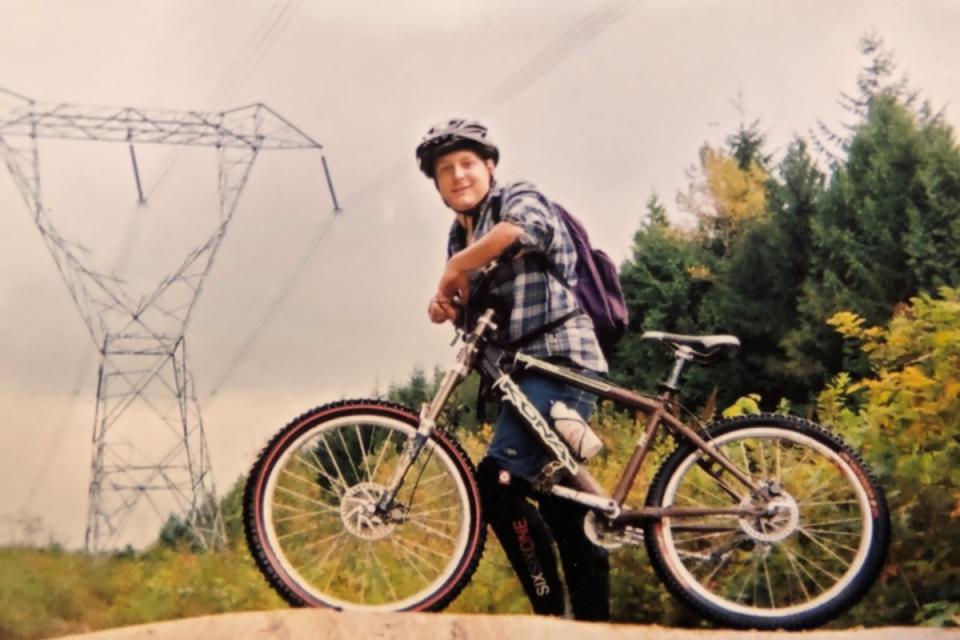
Here's my first Kona. A Roast in around Y2K. I won't try to include photos of all the Kona bikes I've owned, just looking to add some color.
Photo: Andrew Major
View the 2 images of this gallery on the original article
On the other hand, from their best basic commuter rig on the market, the excellent Kona Dew series, to a solid line of affordable hardtails, to durable, fun, high-value full suspension bikes, you didn’t have to ‘sell’ Kona bikes. The company sponsored some riders, folks they genuinely liked. Often, I think, for the stories of how they arrived rather than whatever results they were creating at the moment.
The paint jobs and graphics were always unique, and the brand was cool enough, but at the same time, the bikes were attainable and fun to ride. The Kona of those days didn’t have an equivalent of the US$8200 Process X Carbon Deluxe. Plenty of people wanted to buy bikes from Kona, but nobody wanted to buy that bike from Kona. I’m not sure that’s changed.
And when I say plenty of people wanted to buy bikes from Kona I want to be clear there wasn’t necessarily ever a particular spark in the air. No whirlwind romance or exotic lust-driven leaving of past principles. It was like any number of solid relationships I know of that started with a “Hey, you want to grab a beer/coffee sometime?” Sensible low-maintenance fun with a wild side. Solid family support in the background.
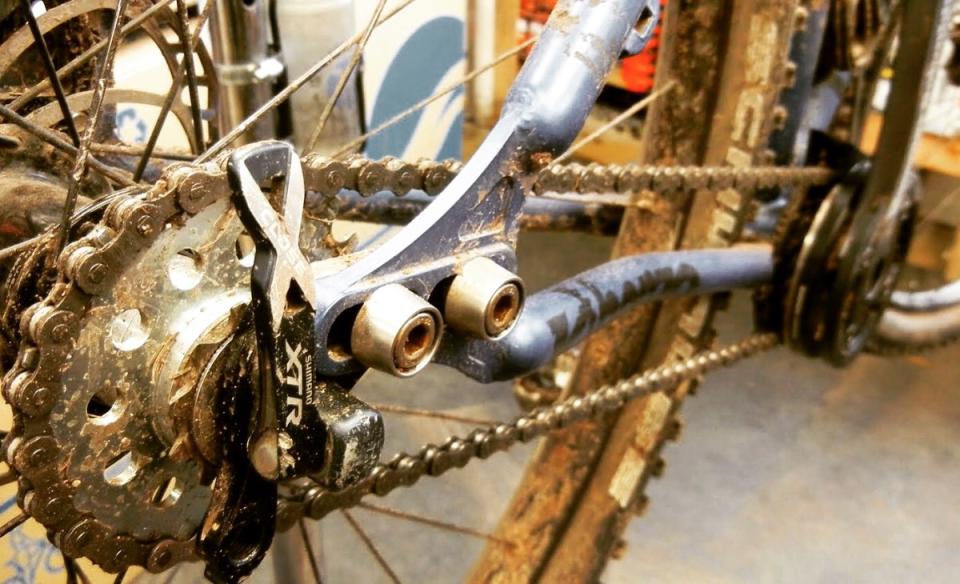
Photo: Andrew Major
I admit that my younger self, with bright eyes and carbon-soled dancing slippers for shoes, didn’t get it at first. I remember in the later noughts asking Dik why Kona only had one Shimano-XT level bike in the lineup – a Dawg Supreme if I remember correctly. I’m almost certain he sighed and had a brief, silent, commiseration with the ceiling before answering. I had that effect on sales reps. Then he said, in his matter-of-fact way, “That’s why we sell frames.”
Above a certain price point mountain bikers tend to have component preferences they expect to see fulfilled. It’s often down to brands. What’s the point in a bike including a carbon bar from one outfit when the purchaser truly desires a different one? In those Shimano heady days, Kona would sell performance mountain bikes with Deore and SLX drivetrains and mid-range suspension and the odd small run of higher-priced ‘Supreme’ outliers. They’d all be heavy on basic house-branded parts and reasonable on the wallet. Upgrade as desired. The full suspension frames used fairly basic and bomber construction and small parts were supported for years and years after sale.
I sold a few much higher-end Kona builds and saw many others on the trail. But they were always frame-up jobs by folks who were already fans of the brand and wanted a bespoke version. To this day I know a pile of riders who have a custom-assembled steel Honzo or Honzo ESD with the highest-end hubs, brakes, suspension forks, and drivetrains (when they’re not single-speeded). They all started as very reasonably priced frame-only options and then received personal builds. Here I’d argue that folks choosing a Kona for their custom has long been one of their most marketable features.
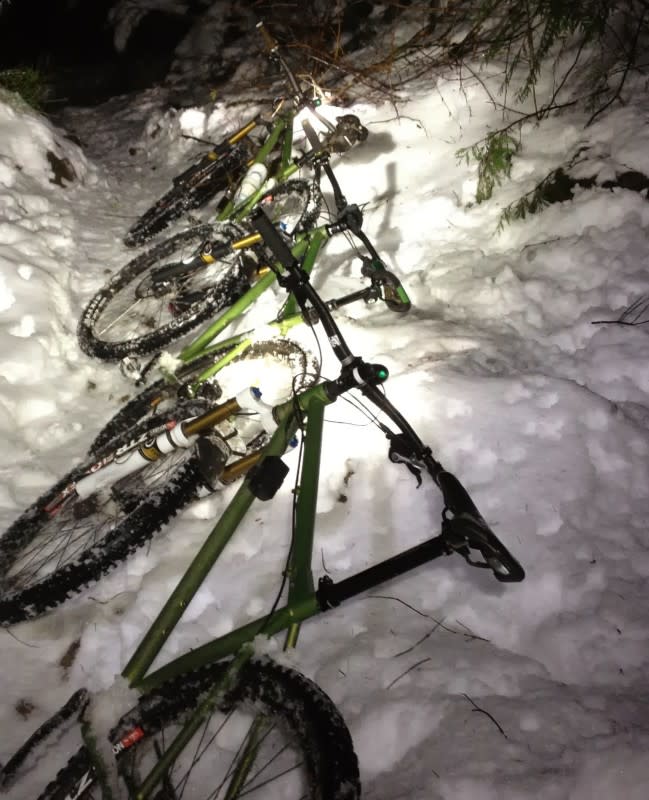
A fleet of custom 2013 Honzo (Greenzo) rigs on the night ride I used to host. Note the Fox Factory forks all around.
Photo: Andrew Major
View the 3 images of this gallery on the original article
My first Kona was a frame-only. A year-2000 Kona Roast hardtail in coffee brown with glow-in-the-dark decals. It came from their scratch-and-dent pile. In this case, it hadn’t passed QC/QA because the rear IS disc brake tabs were welded on at an angle. It took me half a day with my dad’s hand files to carve an angled enough brake adapter to put it all together. A lot of folks probably thought it was a jalopy, but to me, it was a rat rod.
It was also a bit of a coming-of-age story. I’d never had too much trouble chatting with adults but the local Kona shop was owned by a cantankerous wrench – w.r.e.n.c.h. as in mechanic – named Floyd who always seemed too bitter for my world view where bike shops must be the happiest place on earth. Yeah, I know. Anyway, I needed a new frame to hang my parts on and I didn’t have much money, so I built up the courage to ask Floyd if he knew of any deals.
He called Kona and told the person on the other line that he had a kid in the shop short on funds who needed a bike frame. That person at Kona put him on hold and then actually went and looked in their stack of seconds. A number was agreed upon. And by the end of the week, I had my frame with an all-steel Big Fat Pig headset pressed in. I had all the tools I needed to mount the rest.
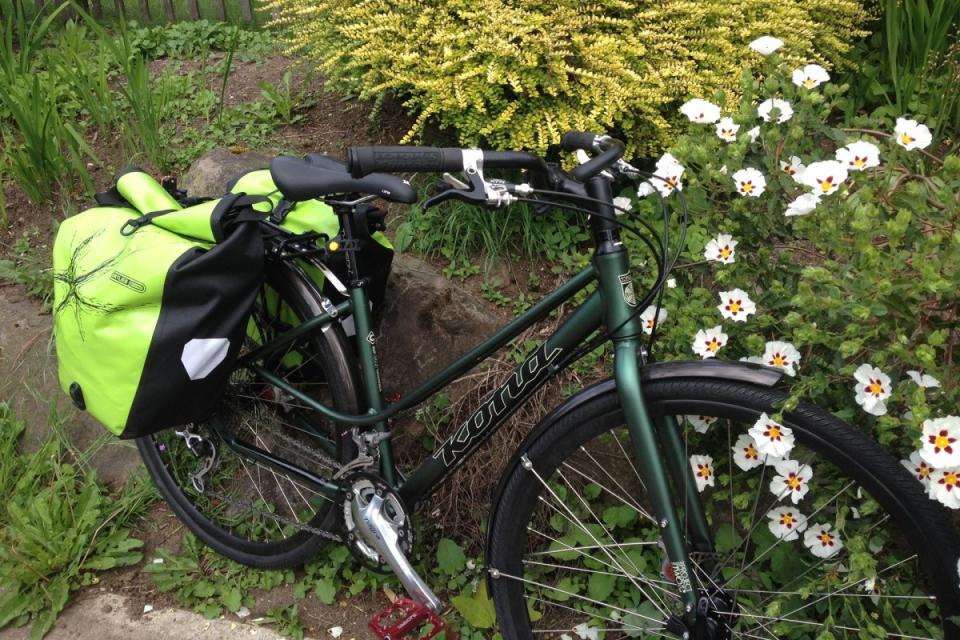
Why is the stem on my wife's Coco on backward? She was six months pregnant on this train & cycle trip to Portland.
Photo: Andrew Major
View the 3 images of this gallery on the original article
I’ve owned several Kona’s since then. A Hei Hei, a few Honzos, an Explosif, a Dew, a Rove, two generations of Jake The Snake. A couple of generations of Unit, one of the first runs of Raijin. Oh, and my beloved Paddy Wagon. Only the Hei Hei and the Dew were bought as complete bikes rather than frames. I’ve also ridden a few examples of the Process 111, 134, and 153, plus the Magic-Link bikes and a multi-generational Stinky sample pack.
Most of those were fantastic bicycles and the ones that stand out speak to where Kona’s at their best. Building serious bikes that don’t take themselves too seriously. As my friend Brian-Mc once said, “Honzo, it’s a name and a war cry!” It was also an awesome frame for a very reasonable amount of money. A program that Kona continued right up until recently.
I could write a stand-alone piece about most of those bikes. The builds, the adventures. But I think just including some photos here with brief descriptions probably sums up the point I’m trying to make. Build fun, solidly supported, high-value bikes for the every-rider and sell reasonably-priced frame-only options for the more persnickety or prosperous person who’s bought into your schtick. Care about making great bicycles, and then don’t take yourself too seriously when you’re selling them. For most folks, they’re toys we play on in the forest or tools we use to go places and they don’t have to be the lightest, fastest, smartest, or boldest to be the most loved.
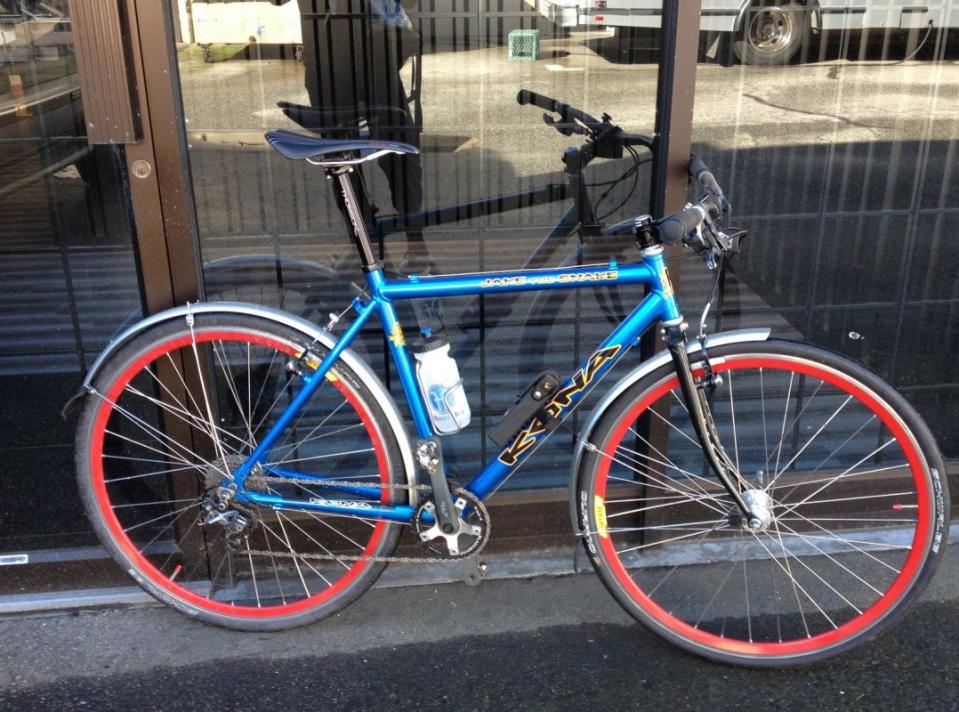
My coolest Kona was probably this classic Jake The Snake with a 1" steerer tube. One size too small or I'd still have it.
Photo: Andrew Major
View the 2 images of this gallery on the original article
You’re not going to beat Specialized on carbon fiber optimization. They have more engineers looking at layup schedules for a single model than most bike companies employ in entirety. You’re not going to out-list Trek on model & spec options, no matter how right they size their lineup. You’re not going to stand up to Giant on spec per dollar because they command the powers of colossal size and vertical integration. You’re not going to out-innovate the next hungry engineer with a compact long-travel 8-bar idler-equipped full suspension design with play-money backing and sick branding.
You’re most certainly not going to own your retail locations like those above brands and the PON shops, so maybe tone down the direct-sales disaster and work on rebuilding relationships with your awesome dealers and the good folks who work in them.
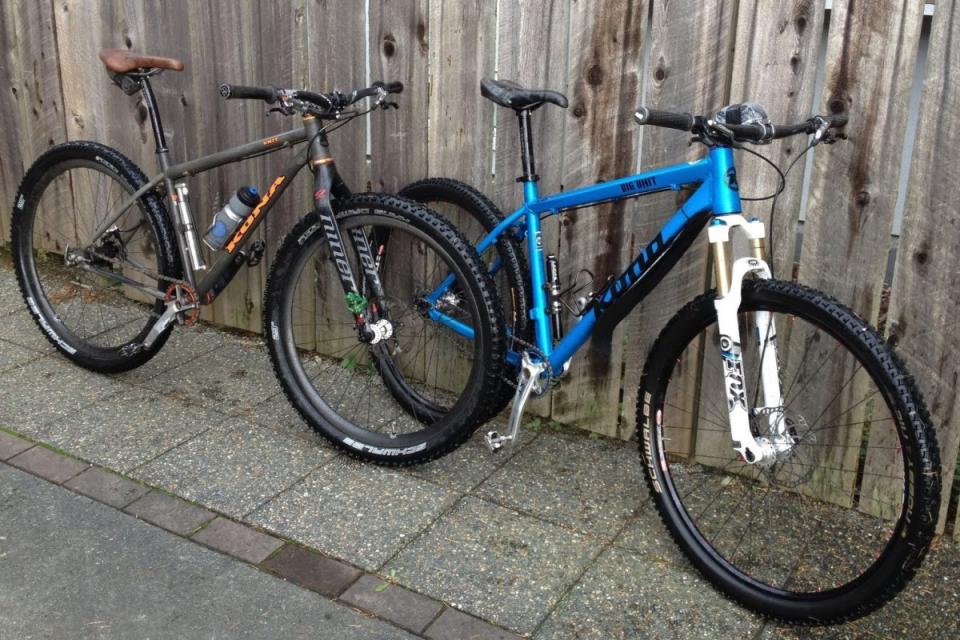
Fun over optimization. Kona Units and Big Units for days. I know a lot of single-speeders and at some point most of them have owned a Kona. Many still do.
Photo: Andrew Major
View the 2 images of this gallery on the original article
Whoever does buy Kona has been left with a really good trail map for how to wrest success out of the Washington & Vancouver-born brand. A pile of really good folks spent thirty-plus years drawing it, and it’s not hard to follow. Just ask Marin Bikes! And, just to be clear, that’s intended as a compliment both ways.
And I’m certain whoever buys Kona – and I’m certain that someone will buy Kona – will employ much smarter and more experienced folks than myself, wedded to the current realities of making money selling bicycles. They’ll probably talk about moving upstream. It will be noted that it should be significantly less work to sell one loaded Process X CR Supreme than ten basic Lava Dome hardtails. Margin dollars! Think of the savings on shipping! There will be a fancy ‘we’re back’ marketing campaign.
And maybe that’s the only way to run the biggest little bike company in 2024. Tell me I’m naïve. Tell me I’m optimistic. Tell me I’m wearing the magical rose-tinted glasses of historical inaccuracy. But it sure feels like the industry could use a few more old-school relationships-first bike brands just making solid rigs for the every-rider without any focus on what rigs the full-wallets are wielding. If anyone asks where the Ohlins-suspended, carbon-wheeled, T-Type shifted super-bike version of the Process is, it’s easy to say “That’s why we sell frames.”

